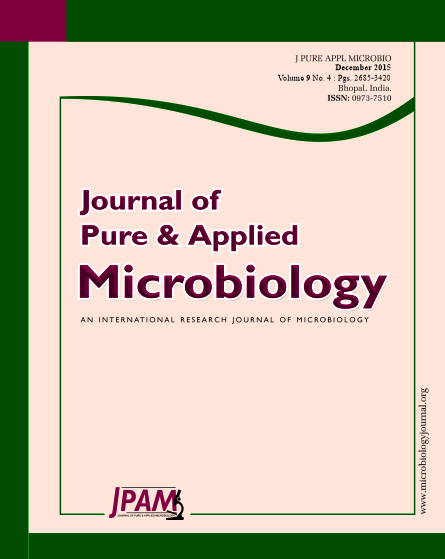Seven bio-fertilizers viz., Azotobacter chroococum, PGPR, Trichoderma harzianum, Trichoderma viride, PSB, Rhizobium, carbendazim, were evaluated in management of spot blotch of wheat and its role on growth parameters and yield. The maximum germination was recorded in case of seed treatment with Azotobacter (95 %). Highest shoot length (25.4, 47.9 and 74.4 cm) and root length (8.4, 10.1 and 11.80 cm) and maximum number of tillers (5.8, 6.3 and 7.30/plant) was achieved when wheat seeds were treated with A. chroococcum and soil application with A. chroococcum at 35, 55, 75 days. The highest fresh shoot and root weight was noted in Azotobacter treated plant as seed treatment and soil application with A. chroococum, representing 17.92 gm/shoot and 1.9 gm/root at 90 days age of plant. Seed treatment and soil application with bio-fertilizer of Azotobacter showed the minimum severity of disease with 42.60%. Higher grain (47.62 gm/pot) and straw yield (74.80 gm/pot) was obtained from Azotobacter treated plant.
Wheat, bio-fertilizers, spot blotch, management, growth parameters.
© The Author(s) 2015. Open Access. This article is distributed under the terms of the Creative Commons Attribution 4.0 International License which permits unrestricted use, sharing, distribution, and reproduction in any medium, provided you give appropriate credit to the original author(s) and the source, provide a link to the Creative Commons license, and indicate if changes were made.


